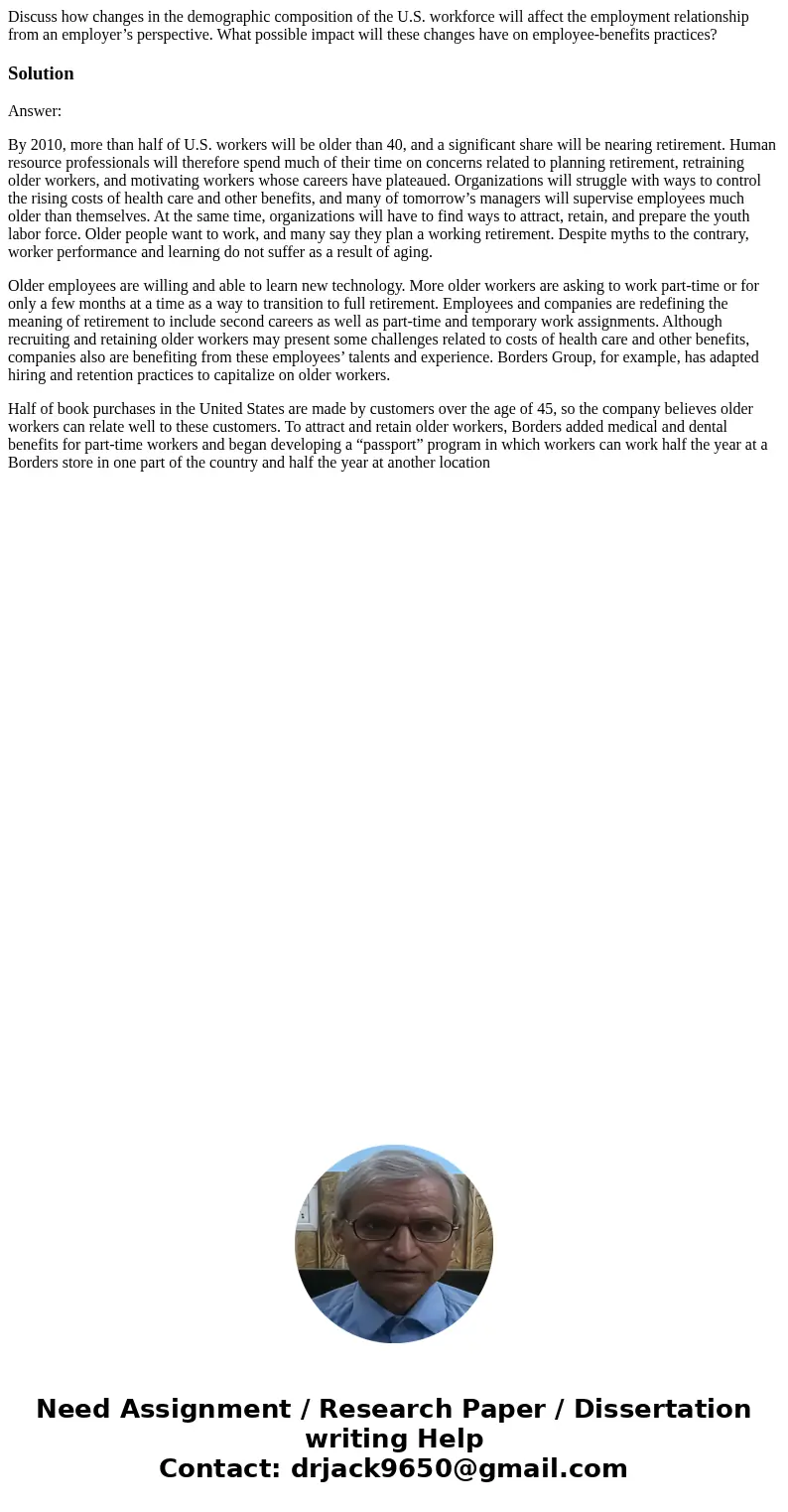Discuss how changes in the demographic composition of the US
Discuss how changes in the demographic composition of the U.S. workforce will affect the employment relationship from an employer’s perspective. What possible impact will these changes have on employee-benefits practices?
Solution
Answer:
By 2010, more than half of U.S. workers will be older than 40, and a significant share will be nearing retirement. Human resource professionals will therefore spend much of their time on concerns related to planning retirement, retraining older workers, and motivating workers whose careers have plateaued. Organizations will struggle with ways to control the rising costs of health care and other benefits, and many of tomorrow’s managers will supervise employees much older than themselves. At the same time, organizations will have to find ways to attract, retain, and prepare the youth labor force. Older people want to work, and many say they plan a working retirement. Despite myths to the contrary, worker performance and learning do not suffer as a result of aging.
Older employees are willing and able to learn new technology. More older workers are asking to work part-time or for only a few months at a time as a way to transition to full retirement. Employees and companies are redefining the meaning of retirement to include second careers as well as part-time and temporary work assignments. Although recruiting and retaining older workers may present some challenges related to costs of health care and other benefits, companies also are benefiting from these employees’ talents and experience. Borders Group, for example, has adapted hiring and retention practices to capitalize on older workers.
Half of book purchases in the United States are made by customers over the age of 45, so the company believes older workers can relate well to these customers. To attract and retain older workers, Borders added medical and dental benefits for part-time workers and began developing a “passport” program in which workers can work half the year at a Borders store in one part of the country and half the year at another location

 Homework Sourse
Homework Sourse